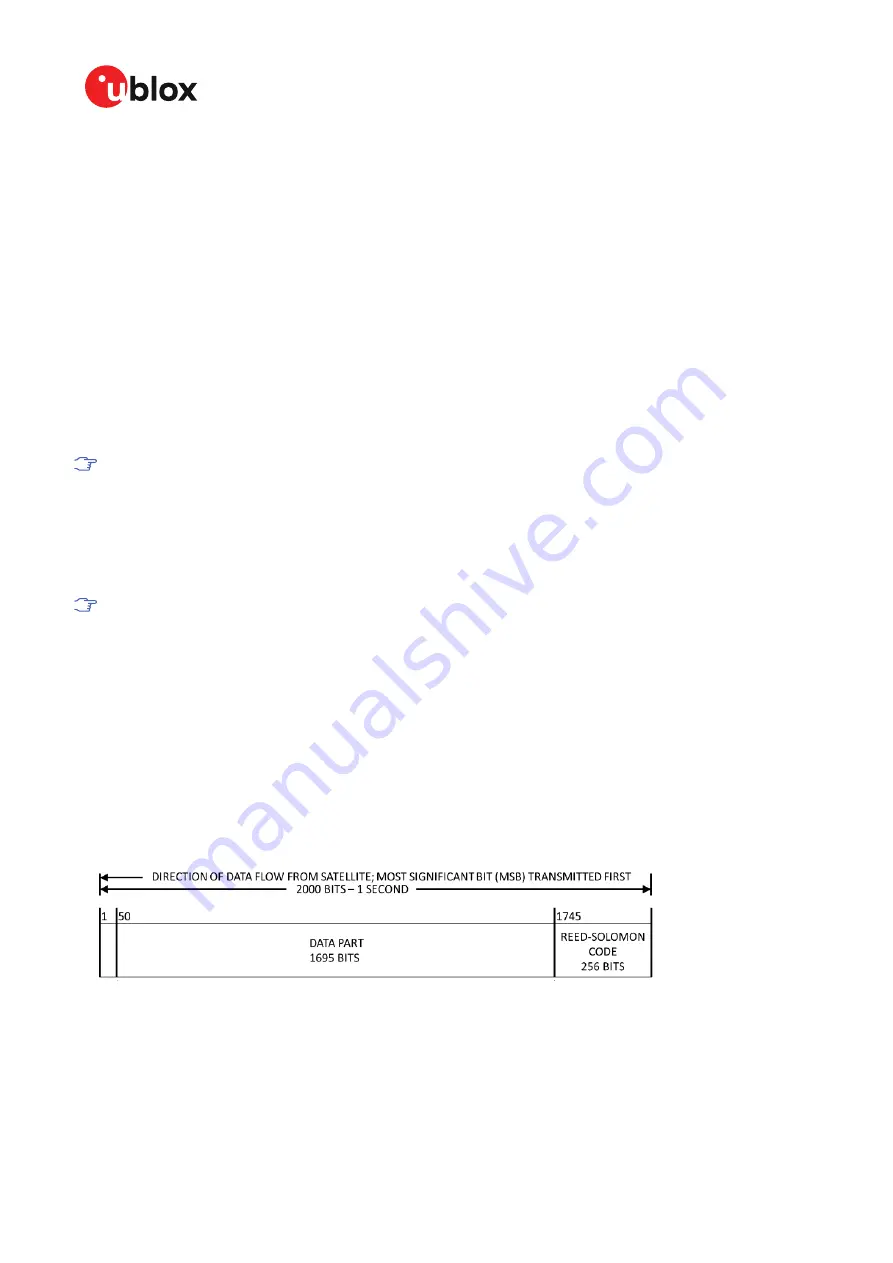
NEO-D9C - Integration manual
• CFG-QZSS-L6_MSGA
• CFG-QZSS-L6_MSGB
There are two message channels (A-B). Each of these channels can output QZSS L6 message L6D
or L6E.
By default the firmware has the SVIDA and SVIDB set to "0". The default selection for MSGA and
MSGB is set to L6D message for both channels. With this selection the firmware will acquire the two
strongest QZSS satellites and provide the L6D message on both channels.
If SVIDA is set to a SVID rather than the default of "0" it will acquire the SVID selected. SVIDB can
remain set to "0" and will acquire the QZSS satellite with the highest C/N0.
In the UBX-RXM-QZSSL6 output message the C/N0 reported will be for the L6 signal level and not
for the QZSS L2 signal level.
The NEO-D9C and ZED-F9x should be powered on at the same time to ensure the NEO-D9C receives
the messages at the correct time.
In order to ensure a fast start-up and re-acquisition time the NEO-D9C can be aided by the
ZED-F9x. This is done by inputting the following 3 UBX messages.
The three UBX messages that can be enabled on the ZED-F9x and sent into the NEO-D9C are:
• UBX-NAV-PVT
• UBX-NAV-TIMEGPS
• UBX-RXM-SFRBX
No other UBX/NMEA messages should be sent into the NEO-D9C.
If the ZED-F9x and the NEO-D9C are directly connected by UART, only the three indicated messages
should be enabled on the ZED-F9x output interface. No NMEA messages should be enabled.
The USB interfaces of the ZED-F9x and NEO-D9C can be used as host interface. If the host interface
is only UART1 for both units, the host application must re-direct the three required messages to the
NEO-D9C input.
3.1.6 QZSS L6 data message output
The L6 data is transmitted from the satellites in 250-symbol subframes with duration of 1000 ms.
The subframe begins with a 4-symbol fixed preamble pattern 0x1A, 0xCF, 0xFC, 0x1D, followed by
214 data symbols and 32 Reed-Solomon parity symbols. The message structure is the same for
both L6D and L6E signals.
Figure 8: QZSS L6 subframe
The contents of this L6 message are explained in the IS-QZSS-L6-001 specification for the QZSS
L6D/E service.
The NEO-D9C is simply a data link layer receiver for the CLAS/MADOCA correction data, and
other services transmitted on the QZSS L6 band. It does not parse, assemble or post-process the
UBX-21031631 - R02
3 Receiver functionality
Page 13 of 53
C1-Public














































